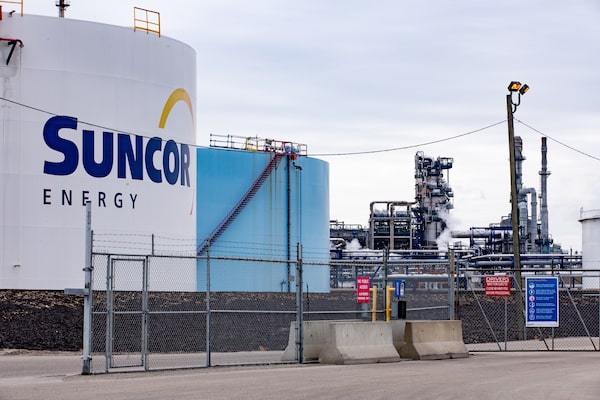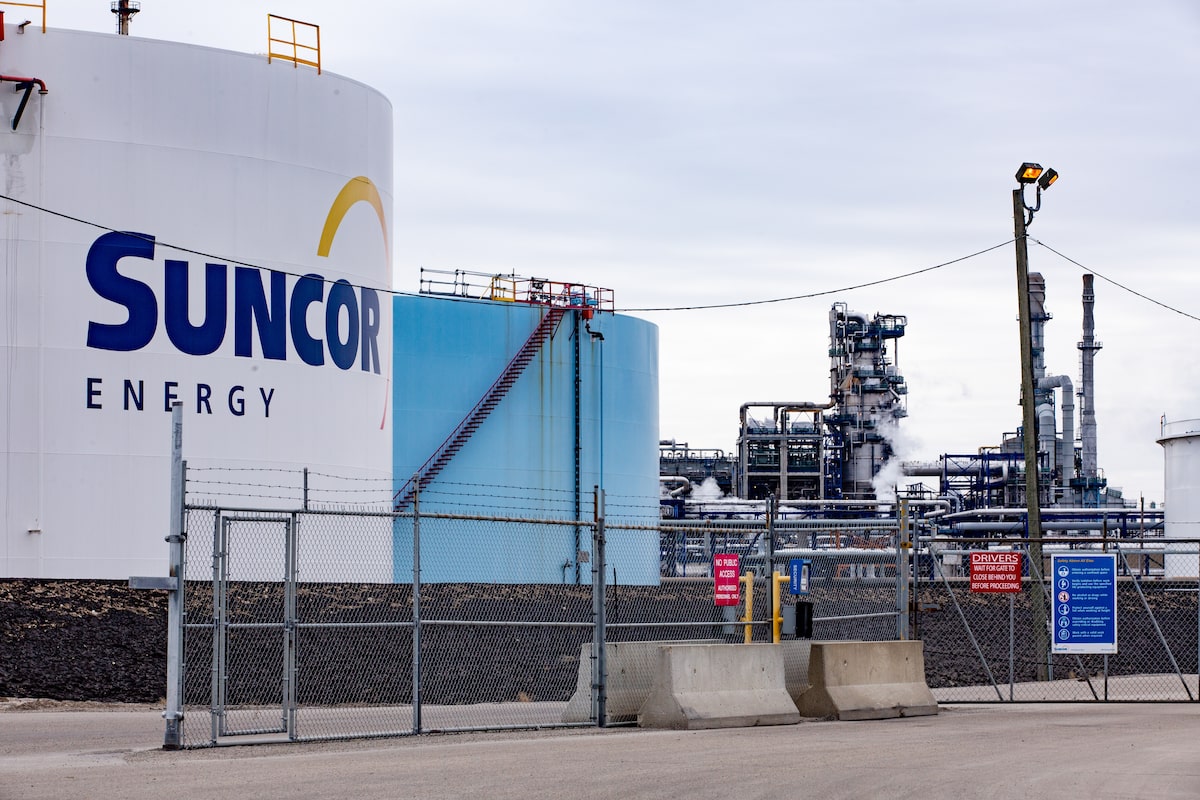Sector players are relatively upbeat despite current market turmoil caused by U.S. President Donald Trump’s constantly fluctuating trade war

The Suncor Oil Refinery on Edmonton's east side on April 14.Kaeden Dupre/The Globe and Mail
Falling oil prices are a perpetual worry for Alberta’s resource-heavy economy, but the province’s fossil fuel industry has some factors working in its favour as U.S. shale producers struggle to break even.
Between relatively strong balance sheets, lower break-even costs for oil production and an unusually narrow difference between the benchmark prices of U.S. and Canadian oil, sector players are relatively upbeat despite current market turmoil caused by U.S. President Donald Trump’s constantly fluctuating trade war.
Jon McKenzie, chief executive of Calgary-based oil giant Cenovus Energy Inc., said in a recent interview that the dramatic oil price drop of US$10 last week was “far from an existential crisis” for the industry.
“It’s not necessary to go tools-down on projects or think about cutting dividends and those kind of things like we did in the past, simply because we have taken care of our balance sheets and taken care of our cost structures and we’re able to get through the cycle,” he said.
The expansion of the Trans Mountain pipeline system and conversations about building more pipelines to access markets other than the United States also have Canadian companies feeling encouraged, said Randy Ollenberger, head of oil and gas research at BMO Capital Markets.
“Their balance sheets are so strong, no one’s particularly stressed about the drop-off in oil prices,” he said in an interview.
“I think most companies – and investors, for that matter – would look at the gyrations in the market right now as probably temporary.”
Each US$1 swing in the per-barrel price of West Texas Intermediate, a North American oil benchmark, means $750-million more or less for Alberta’s coffers. And every US$1 change in the differential (WTI versus Western Canadian Select heavy crude) represents a $740-million variation in Alberta’s bottom line.
The discount of WCS to WTI narrowed on Friday to US$9.60 a barrel, according to brokerage CalRock. It rose to just over US$12 on Monday, but continues to be historically tight because of U.S. sanctions on heavy crude-producing countries such as Venezuela, as well as lower heavy crude exports from Mexico.
Alberta forecast an average WTI price of US$68 in its February budget. Finance Minister Nate Horner said in an e-mail that the province will provide an updated fiscal outlook at the end of August.
“We calculate revenues on a quarterly basis, as daily or weekly fluctuations in the price are common. For example, while the current price of WTI is between US$61 and US$62, with the current differential of US$9 the deficit would be approximately the same as that projected at budget,” he said.
Eric Nuttall, senior portfolio manager at Ninepoint Partners, said in a recent interview that Canadian oil and gas sector balance sheets are by far the strongest he has seen in his career, with no debt, low cost structures and low operating costs. But U.S. shale companies are “in the death zone” with prices hovering at or under US$60 a barrel.
Mr. Trump promised during the election campaign that American energy producers would “drill, baby, drill” under his leadership, but that seems to have fallen flat.
Energy producers in the country last week cut the most oil rigs since June, 2023, according to a report released by Baker Hughes on Friday. It marked the third week in a row that the total number of oil and natural gas rigs has fallen, and the biggest weekly decline since June, 2024.
In the Permian Basin in West Texas and eastern New Mexico, the U.S.’s most productive oil shale basin, the rig count hit its lowest point since December, 2021.
Fears of a global recession – and a resulting drop in oil demand – continue to dog markets.
The U.S. Energy Information Administration this month reduced its expectations of global oil consumption growth.
And the Organization of the Petroleum Exporting Countries forecast in a report this month that world oil demand would rise by less than expected: by 1.30 million barrels a day in 2025 and by 1.28 million b/d in 2026, down 150,000 b/d from last month’s figures. It also lowered its 2025 world economic growth forecast.
Goldman Sachs said it expects oil prices to decline through the end of this year and next year because of the rising risk of a recession and higher supply from OPEC+. The bank expects WTI to edge down to US$59 a barrel for the remainder of 2025, and US$55 in 2026.
With a report from Reuters











